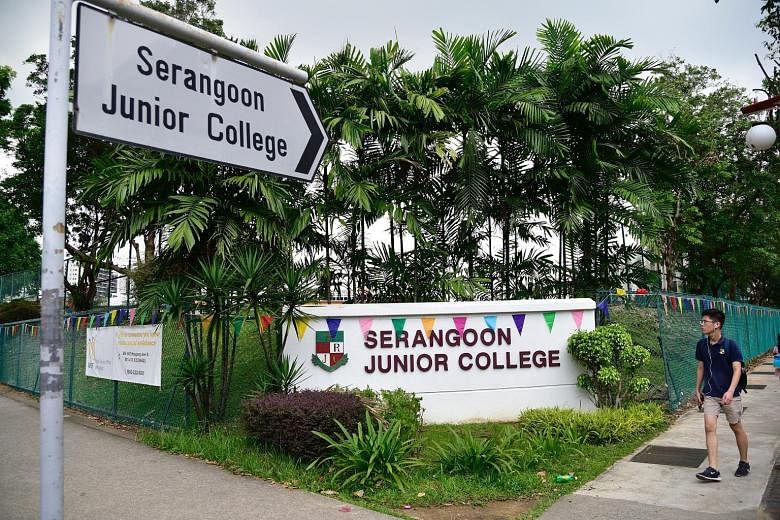The speculation on social media was swift: Has the polytechnic route to higher education risen so high in estimation that junior colleges have become less attractive, requiring some to be merged?
Many expressed that sentiment online following the Ministry of Education's (MOE) announcement on Thursday of its unprecedented move to combine eight JCs here in 2019.
But the numbers do not bear it out, with MOE saying at a press conference that same day that it expects the proportion of students entering JCs to hold steady. Its projected JC intake of 12,800 in 2019 - a drop of about 20 per cent from 16,000 in 2010 - was based on trends in the birth rate, though it also built in a buffer to accommodate any fluctuations.
In fact, polytechnics have also been hit by falling birth rates, according to the ministry, with student enrolment in polytechnics dropping by a fifth from a few years ago as well. Each of the five polytechnics enrols about 4,000 secondary school leavers yearly.
In response to queries from The Straits Times, MOE said the proportion of post-secondary students who chose JCs or the Millennia Institute through the available routes, including direct school admissions and the Integrated Programme (IP), remained at about 41 per cent in the last five years. About 53 per cent chose a polytechnic, while 6 per cent or so entered the Institute of Technical Education.
A minority will take both paths. About 1 per cent of students enrol in polytechnic after JC, while about 0.5 per cent go the other way.
Over the past decade, the proportion of students who are eligible for JC but choose to go to polytechnics has remained at around 32 per cent to 34 per cent. Still, Jalan Besar GRC MP Denise Phua, who heads the Government Parliamentary Committee for Education, noted it was "not uncommon" now to see potential JC students choosing the more skills-based education of a polytechnic, given the expanded range of post-secondary options.
Such a trend is "not necessarily a negative development in view of the Government's SkillsFuture call for a greater balance between academic and vocational skills pursuits", she said.
However, some parents viewed it as an elitist move, questioning why only non-IP government JCs were merged, while other IP schools and government-aided JCs were spared. While MOE said schools were selected to ensure an even geographical spread of JCs, and that some of those affected had been hit by falling enrolment, not all were convinced.
A 43-year-old programmer with two children, who wanted to be known only as Mr C.J. Tay, said it was a pity JCs like Serangoon and Meridian had to be merged. "They have put in a lot of effort to raise the reputation of the schools despite being newcomers. It could become a vicious circle for them if they fail to attract students after they merge."


